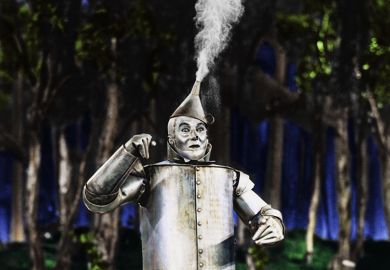Put Silicon Valley and Boston on the back burner. Pharmaceuticals hotbed Basel and the Austrian state of Styria with its high-tech steel and paper industries are among the models that policymakers should learn from to spread the benefits of innovation to the “masses”, according to a professor’s new book, partly inspired by divisions in his hometown of Oxford.
Innovation for the Masses: How to Share the Benefits of the High-Tech Economy, by Neil Lee, professor of economic geography at the London School of Economics – recently included by the Financial Times among its best new books on economics – offers a message on how universities can help create good jobs for their regions.
The book emerged from his research on “levelling up” in the UK and “how you can use innovation to reduce spatial inequality”, Professor Lee told Times Higher Education. It also responds to an argument made by some academics who study innovation that “inequality is the price you have to pay to have a highly innovative economy”.
But, he said, that view relies on a Silicon Valley-focused view of innovation where “we don’t look at the places that are also highly successful, where they do have these mechanisms which can make sure the gains from innovation are broadly shared”.
The book consists of case studies of four nations – Sweden, Switzerland, Taiwan and Austria – based on interviews with policymakers and business leaders, as well as data analysis.
One place Professor Lee visited was Leoben, deep in the southern Austrian state of Styria, a city traditionally focused on steel and mining, with its Montanuniversität Leoben, a small technical university – a city that, he writes, “should be the archetype of industrial decline”, but is far from it.
Part of the reason why, the book argues, “is that between 1998 and 2016, Austria saw the largest increase in R&D intensity of any OECD economy bar South Korea”, with much of that growth occurring in industries such as steel, rather than tech.
Styria doesn’t come up with the stuff on your iPhone, but it does, Professor Lee explains, produce machines that remove bad grain from production using light sensors and puffs of pressurised air; it produces the world’s longest train rails, which save assembly costs; and it produces high-quality paper. All this makes the state “a good example of the Austrian advances in normally low-innovation industries”.
Across all his case studies, Professor Lee saw locally focused universities of applied sciences – alongside strong vocational education and institutions that diffuse innovation into the average firm – as a key part of the equation. Such universities are “not necessarily [doing] world-leading blue-sky research”, he said, but do help make firms highly innovative via “marginal incremental improvements by applying other existing technologies…to their own production processes”, with that local role for universities “often crucial in terms of creating good jobs”.
A key element, he argued, is in fostering innovation that creates not just high-skilled jobs, but medium-skilled jobs.
Professor Lee, an economist at Lancaster University’s Work Foundation thinktank before becoming an academic, described his hometown of Oxford, where he still lives, as “part of the inspiration” for the book. While he has friends in Oxford “who are star scientists and their lives are great”, soaring house prices and a “hollowed out labour market” around the university-driven innovation economy mean life is not so great for some of the people he went to school with.
He contrasted that with the Swiss city of Basel, a pharmaceuticals centre that, judged on patents per capita, is “the most innovative place on earth”.
“In Basel, the problem is partly solved by the vocational education system. I talked to pharmaceutical firms and the first thing they would say is, ‘We’re not just here because of the star scientists; we’re here because we have people who can run the tests and do good things in labs.’”
Meanwhile, the city of Oxford, he said, “goes on about how innovative and how important it is in the world – but actually the benefits really don’t translate to the average person”.
Professor Lee hoped the book’s message would reach policymakers in nations such as the UK, US or Canada – highlighting the relevance of Styria’s high-tech steel industry for a region like south Wales, afflicted by continuing job losses in steel – though he acknowledged that the Silicon Valley brand retains a powerful pull.
“The interesting challenge for a book like this is people say, ‘Well it’s very hard to learn these policy lessons from somewhere like Switzerland,’” he said.
“I would argue it’s equally hard, if not more so, to learn these policy lessons from somewhere like the Bay Area [tech sector] which developed 50 years ago.”
Register to continue
Why register?
- Registration is free and only takes a moment
- Once registered, you can read 3 articles a month
- Sign up for our newsletter
Subscribe
Or subscribe for unlimited access to:
- Unlimited access to news, views, insights & reviews
- Digital editions
- Digital access to THE’s university and college rankings analysis
Already registered or a current subscriber?









